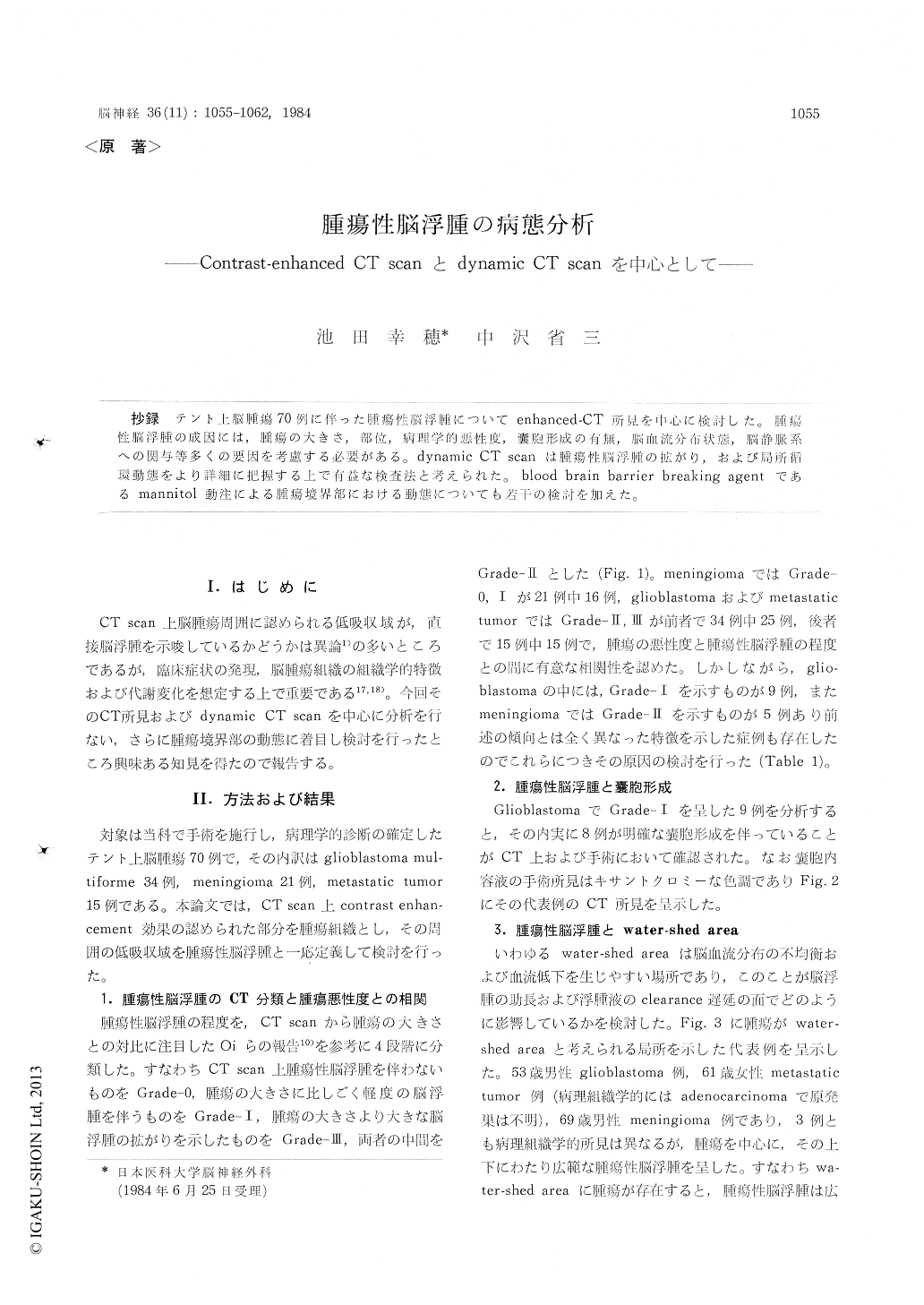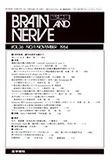Japanese
English
- 有料閲覧
- Abstract 文献概要
- 1ページ目 Look Inside
抄録 テント上脳腫瘍70例に伴った腫瘍性脳浮腫についてenhanced-CT所見を中心に検討した。腫瘍性脳浮腫の成因には,腫瘍の大きさ,部位,病理学的悪性度,嚢胞形成の有無,脳血流分布状態,脳静脈系への関与等多くの要因を考慮する必要がある。dynamic CT scanは腫瘍性脳浮腫の拡がり,および局所循環動態をより詳細に把握する上で有益な検査法と考えられた。blood brain barrier breaking agentであるmannitol動注による腫瘍境界部における動態についても若干の検討を加えた。
Peritumoral edema, a common occurrence in patients with malignant gliomas and meningiomas, is a major cause of morbidity and mortality. How-ever, the causative mechanism of peritumoral edema has yet to be clarified. In this study, seventy patients with brain tumors (34 glioblastomas, 21 meningiomas and 15 metastatic tumors) were exa-mined by CT scan with and without contrast medium infusion and by postoperative histologic verification in all cases. Peritumoral hypodensity areas on CT scan have generally been interpreted as cerebral edema. Peritumoral edema as seen in CT scan was classified into four grades according to the ratio of the largest diameter of tumor and the size of the zone of edema.
Grade 0: no peritumoral low density area is seen in CT scan
Grade I: a s mall amount of peritumoral low density area is seen in CT scan.
Grade II: a moderate amount of peritumoral low density area is seen is CT scan.
Grade III: a large amount of peritumoral low density area is seen in CT scan.
Twenty-five out of 34 glioblastomas and all of 15 metastatic tumors demonstrated moderate or severe peritumoral edemas such as Grade II or III. However 16 out of 21 meningiomas demonstrated mild peritumoral edemas such as Grade 0 or I. The grade of peritumoral edema was closely rela-ted to the degree of malignancy of the brain tu-mors. 8 out of 9 glioblastomas which demonstrated slight peritumorol edema, Grade I, had large cys-tic formations which seemed to serve as buffer action to compression mechanism by brain tumors.The grade of peritumoral edema was also related to the location of the tumor and venous involve-ment.
Infusion of mannitol into the internal carotid artery is said to disrupt the blood-brain barrier. Intracarotid mannitol infusions in one glioblastoma produced the definite increase of contrast enhan-cement. Whether this phenomenon suggests an extravasation of contrast medium or the invasion of the tumor is not clear.
The regional circulation and the extent of peri-tumoral edema was evaluated by means of dyna-mic CT scan. The CT number-time curve gave a few parameters. The peak value was considered to be related to the blood volume of the region of interest. It was a common finding that the peak value in the region of peritumoral edema was de-creased, compared to the region of tumor and nor-mal brain. Clinical application of dynamic CT scan may be useful to evaluate the regional circu-lation and the extent of peritumoral edema. We have to accumulate more data about dynamic CT scan.

Copyright © 1984, Igaku-Shoin Ltd. All rights reserved.


